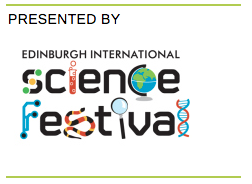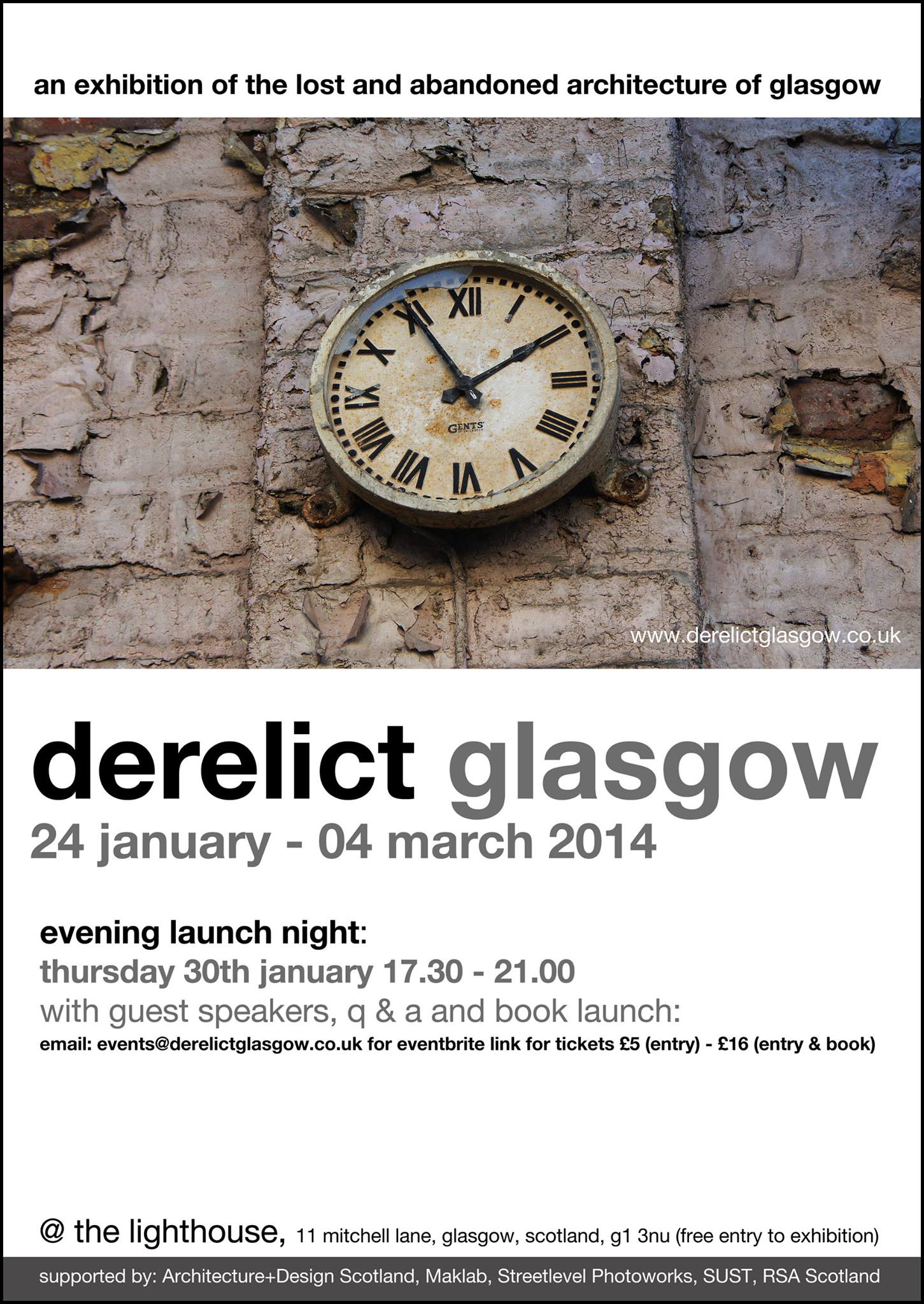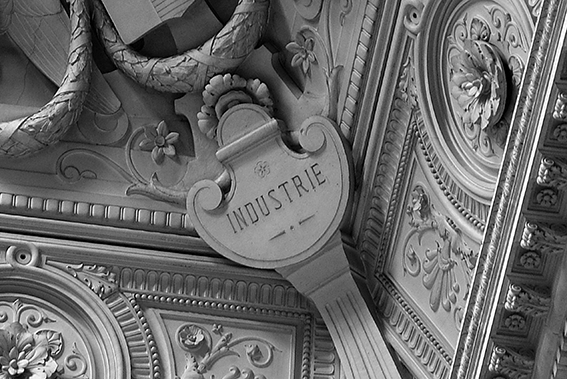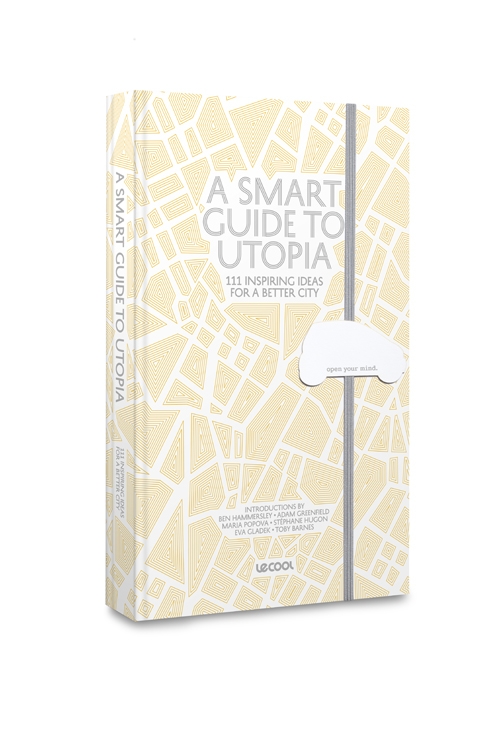Yasmin Ali
Urbanism // Design
Edinburgh Mini Maker Faire @ EISF
April 22nd, 2014
Last Sunday multi-platform arts venue Summerhall played host to Edinburgh's second annual Mini Maker Faire, which also marked the end of this year's Edinburgh International Science Festival. Billed as 'a celebration of DIY culture in all its shapes and forms', it was a great chance to meet local craftspeople and groups, as well as very much a family event with activities for all ages.
There was a programme of talks and workshops, with Gunnar Groves-Raines of Edinburgh-based architectural practice GRAS among the speakers. Glasgow-based product design engineering centre MAKLAB were on hand with activities to try out, as were Summerhall residents Edinburgh Hacklab with laser cutting demonstrations.
It was a good chance to meet lesser-known groups such as Leith Lapidary Club which ran some popular enamelling drop-in sessions. Also open for tours was Summerhall's own in-house Gin distillery, Pickerings, with a piped supply going straight on tap to the Royal Dick bar on the Summerhall campus.
// The Mini Maker Faire is part of an international movement and programme of events. A larger event takes place in Newcastle this weekend (26-27th April).
Book Review: Derelict Glasgow
March 7th, 2014
Derelict Glasgow is a book, website, exhibition and symposium curated by architectural photographer and designer Joe Shaldon, with support from A+DS. The book is the culmination of a personal project, which has gained acclaim from professional circles and the public alike, with a limited sold-out print run and pre-orders for another in the pipeline. The Derelict Glasgow website is popular, with over 15,000 visitors per month and no advertising other than social media and word-of-mouth. The exhibition runs for six weeks from 24th January 2014 onwards at the Lighthouse, following the sold-out symposium.
With related topics in vogue such as urbexing (urban exploring) and the new photo-documentary genre dubbed ‘ruin porn’, the book is on the money in terms of current trends, but also hits a note with more longevity. Glasgow is a city with a long history of contested demolitions, including works of Alexander Greek Thomson in the sixties, as well as more recent high-rises like Red Road and Sighthill, threatened by waves of gentrification via initiatives like the Commonwealth Games regeneration programmes.
The limited edition book, subtitled volume 1, is a neat archival collection of photographs of mainly vacant and disused buildings around Glasgow, alongside a concise short history and description for each. The photos alone form a powerful photo-essay of Glasgow’s urban decay and a harsh reminder of the cracks that can emerge in the urban fabric of shrinking cities. Despite their dereliction, these buildings are often looked upon with a sense of affection attached to nostalgia, which in part, explains the popularity of the subject matter, especially with the local community. The rest is explained by seeing this impressive body of work.
// Catch the exhibition at The Lighthouse, Glasgow until 4th March, Free.
Sensing Spaces at the Royal Academy, until 6th April
February 21st, 2014Sensing Spaces at the Royal Academy is a series of seven life-size architectural installations, each with their own viewing room, by distinguished architectural practices. Amongst the contributing artists are signature architects Eduardo Souto de Moura and Alvaro Siza, who provided the opening exhibit in the outdoor courtyard of the Royal Academy, which is also free to view. Subtitled as ‘Architecture Reimagined’,the carefully curated exhibition encourages viewers to experience new perspectives on architecture through these sequential interactive spaces.
The exhibits ranged from those seeming to be objects to view and not touch, to participatory spaces to experience and share. De Moura’s arches are two replica door cases of others at the RA which bookend another exhibit, and are conceived as sculptures and though appear tactile evoke reverence to not disturb. Diébédo Francis Kéré’s ‘room within a room’, is a paraboloid shape of 60mm honeycomb panels, into which visitors are encouraged to insert straws to help shape the resultant space. Li Xiaodong’s contribution is unique as it is not an object in space but a transitory space itself. Visitors are led through a maze of coppiced timber lit by LEDs leading to a pebbled Zen garden. Japanese architect Kengo Kuma’s also offered an eastern perspective by two delicate structures of lit whittled cultivated bamboo constructed into light pavilions.
Undeniably popular was Pezo von Ellrichshausen’s raised wooden pavilion overlooking the main gallery, accessible by four cylindrical spiral towers and a ramp system. This encouraged visitors to access the installation as users rather than mere viewers of the space. The most seductive space in terms of materiality and interplay of light and shade was the faux concrete atrium by Grafton architects, accessible off a lighter space with plaster panels. IPad catalogues and a screening of a short film featuring architect’s interviews complement the exhibition.
// Sensing Spaces runs until 6th April at the RA. There is also a programme of special associated events and talks, some of which are free to ticket holders here
// Tickets £14.50 (£13/£9)
ACT Symposium 2: Architecture and the Technological Revolution, 06.02.14
February 12th, 2014
As part of the architecture postgraduate course, Strathclyde University is running a series of symposia, and opening these up to the public as guests and architectural professionals as CPD events. The second in this series was themed around architecture and technological representation, and featured talks from two academics, Prof. Neil Spiller and Dr. Rachel Armstrong.
Neil Spiller is an academic and author based at The University of Greenwich. His work has a recurring theme of issues concerning digital media and architectural representation. He spoke of his longstanding interests in these areas, showing slides to illustrate his talk of key influences and many of his own drawings which blur the boundaries between the handmade, the mechanical and the digital. Key themes included Surrealism; metaphysics; psychogeography; modern art; modernism in general; collage; and concepts borrowed from digital media including Augmented Reality; cybernetics; cyberspace; hyperlinks; and the virtual world.
Spiller also introduced AVATAR, a group founded over 10 years ago at The Bartlett, UCL, along with its seven continuum of Space; Technology; Semiotics; Time; Psychogeography; Scope and Sensitivity. This led on to the introduction of his former colleague and the second speaker Dr. Rachel Armstong, who currently works for the unit. Armstrong has an interested background as a PhD architecture graduate via a biomedical sciences background. This gives her a unique set of skills and position of commentary on key issues, such as the quantification of sustainable outcomes.
After a brief introduction on the meaning and implications of the sustainability agenda, Armstrong set out a thesis that calls for the ontology of process as opposed to the hegemonic object-based philosophy generally pursued in architecture. In addition she cites biomimicry as a suitable tactic to emulate and introduced a series of films of experiments documenting life-like synthetic processes, such as the immiscibility of oil and water, a modern documentation of an experiment originally conducted in the late-eighteenth century. This work was reminiscent of video artist Robert Smithson’s work on entropy, which has been cited by architectural commentators as architecture’s ‘thermodynamic turn’.
Armstrong also introduced the pioneering project ‘Future Venice’, conducted in-situ with a team including Spiller, to use simulated technologies to recreate and reconstruct limestone in Venice’s waterways, to reinforce its foundation systems. She spoke of ‘programmable droplets’, which could ideally respond to changing conditions and assimilate to the marine ecology without further configuration. Citing the evolution of geotherms to angiotherms – or leafy to flowering plants – as a response to carbon fixation needs, Armstrong is hopeful for not only simulated life but evolution to future needs.
// This is the second part of a series of four symposia running weekly until and including the 27th February, except the 13th
Future Venice - here
Book Review: LeCool's A Smart Guide to Utopia
February 3rd, 2014
Subtitled as '111 Inspiring Ideas for a Better City', LeCool's A Smart Guide to Utopia is a must-have on any discerning citizen's bookshelf. Beautifully-bound and presented hardback edition with silver gilded lettering and yellow-edged paper. It is illustrated with carefully-curated accompanying photos, sketches, infographics and excerpts from architectural presentation drawings, making it a visual feast.
One of the strengths of its textual content is that it is readable to the general community, not just urban planners. It includes essays by contributors which include architects and key urban thinkers, among these city marketing guru Richard Florida and global multidisciplinary design and engineering firm ARUP. There is also input from LeCool editors from around the world including LeCool London, Lisbon, Budapest, Moscow, Vienna and Barcelona, as well as the founding agency.
Inspring and informative links to associated websites populate the footer of many pages, making this a book for the digital ages. The book is indexed, making the ideas easy to find, and the volume is a useful source book or as a primer for concept research on emerging urban innovations.
// With thanks to K-MB Berlin, Smart, and LeCool
// Retails at £20 (24euros)+ p&p, Hardback, 160 pages, available online from LeCool online bookshop
Weblinks
LeCool Bookshop - http://lecoolbook.com
LeCool website (magazines) - here
LeCool Glasgow - here








